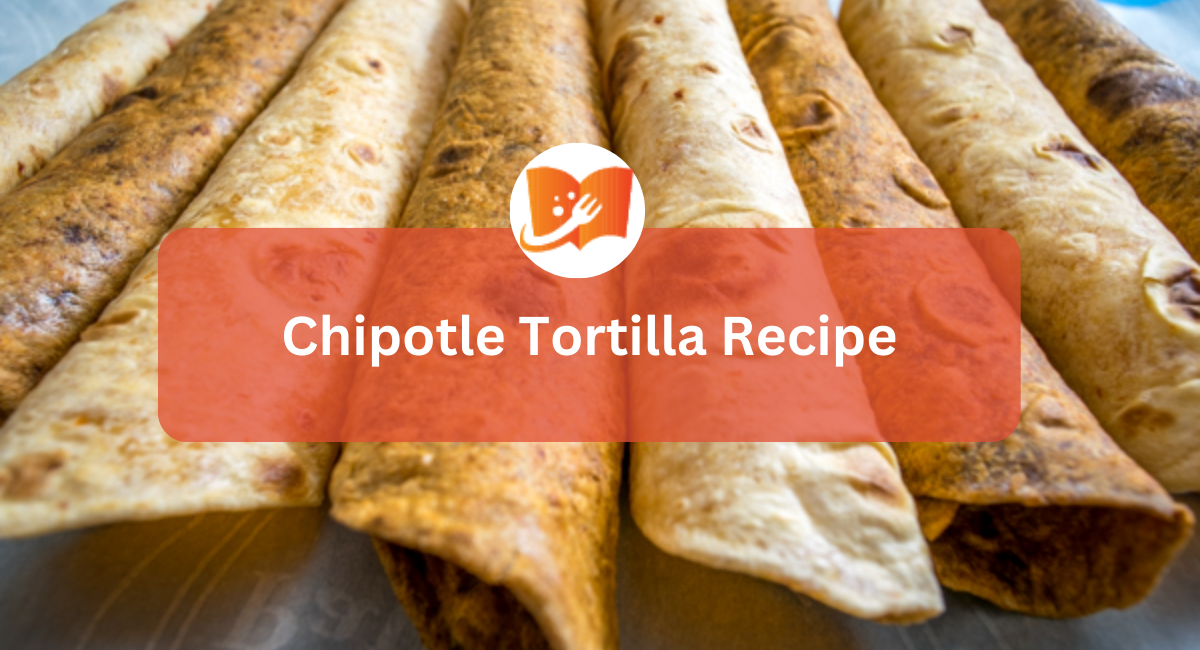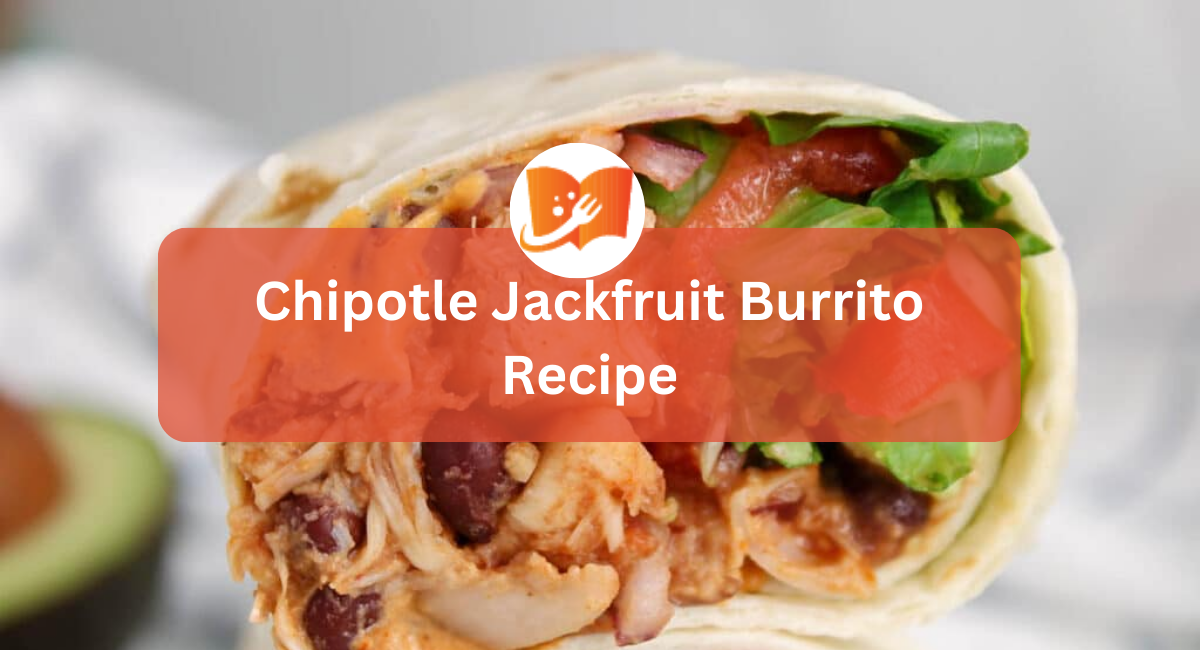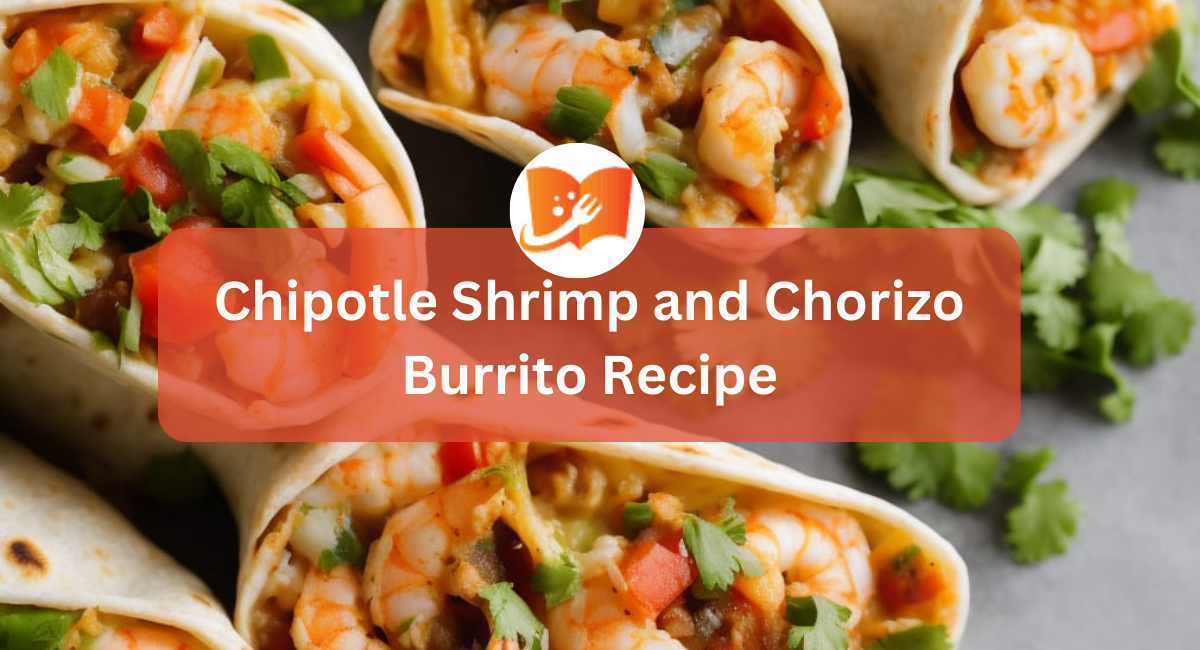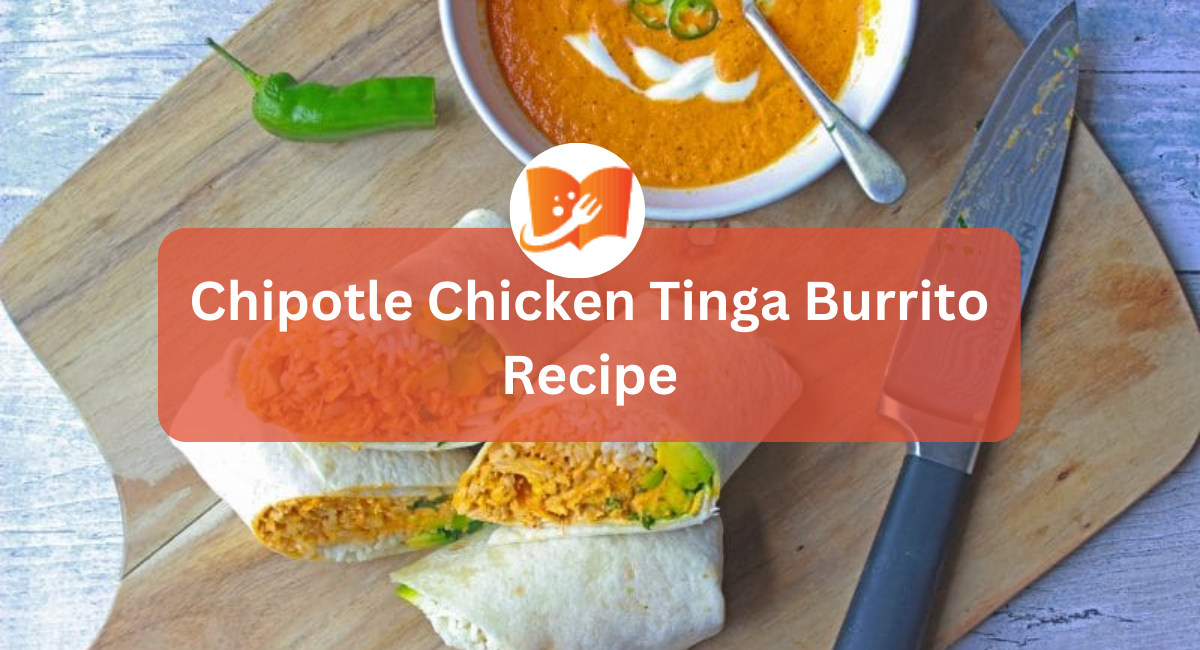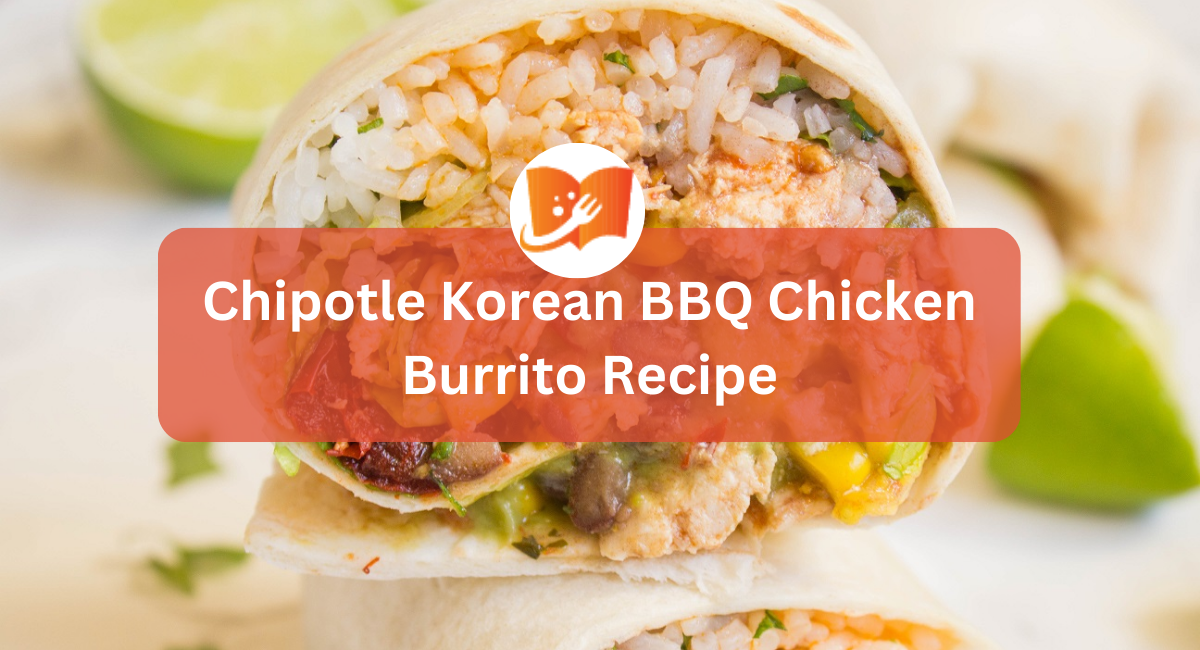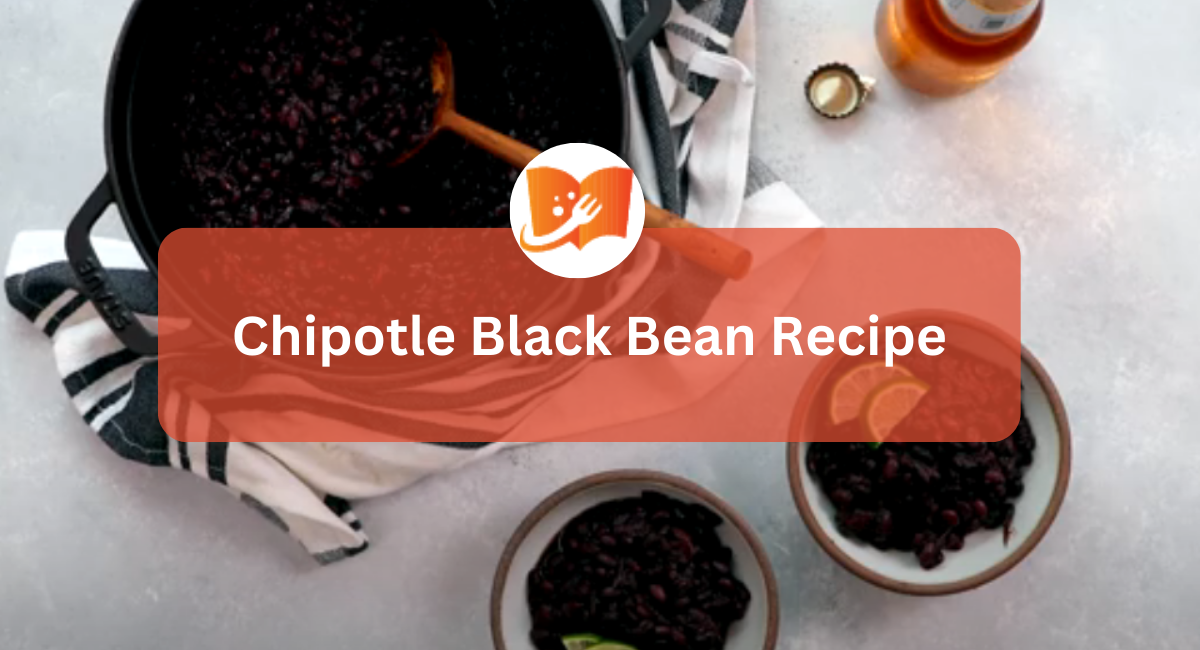I’ve always had a soft spot for Chipotle’s carnitas. The way it melts in your mouth, the perfect mix of spices – just thinking about it gets my taste buds dancing. So, I decided to take matters into my own hands and whip up a Chipotle Carnitas Recipe right at home. It wasn’t easy, but after some trial and error, I nailed it.
The secret? Well, let’s just say a good mix of patience, a few unexpected ingredients, and lots of love.
Now, I’m excited to share it with you so you can bring that same Chipotle magic to your own kitchen.
Detailed List of Ingredients
These ingredients are the foundation of the easy Chipotle carnitas recipe.
- Pork Roast: The star of the dish, you’ll need a 4-pound pork roast. The recipes suggest using pork shoulder or pork butt, as these cuts become incredibly tender when slow-cooked. Boneless pork country ribs are also mentioned as a viable alternative.
- Vegetable Oil: 1 tablespoon is needed to sear the pork roast, creating a flavorful crust and locking in juices.
- Kosher Salt: 1 tablespoon of kosher salt is used to season the pork roast generously.
- Black Pepper: 1 teaspoon of black pepper adds depth and spice to the pork.
- Chicken Broth: 1 cup of chicken broth provides moisture and flavor during the slow cooking process. Some recipes suggest substituting a portion of the broth with orange or lime juice for a citrusy twist.
- Bay Leaves: 2 bay leaves infuse the carnitas with their aromatic, herbal notes.
- Fresh Thyme Leaves: 2 teaspoons of fresh thyme leaves (or 1 teaspoon of dried thyme) contribute an earthy, slightly minty flavor.
- Juniper Berries: The key ingredient in carnitas Chipotle berry. Use 2 teaspoons of juniper berries, which impart a unique piney and woodsy aroma. This key ingredient in Chipotle carnitas is essential for achieving the authentic taste, making it a key ingredient in braised carnitas Chipotle.
Chipotle Carnitas Ingredients Substitutions
These substitutions allow for flexibility in the kitchen while still achieving delicious results. Remember that the cooking time may vary slightly depending on the substitutions you make.
- Vegetable Oil: You can substitute with another neutral oil like canola oil, avocado oil, or even melted lard for a more traditional flavor.
- Chicken Broth: If you don’t have chicken broth on hand, you can use water, vegetable broth, or even beer for a richer flavor profile.
- Bay Leaves: If you don’t have bay leaves, you can omit them or substitute with a pinch of dried oregano or thyme.
- Fresh Thyme: If you only have dried thyme, use 1 teaspoon instead of 2 teaspoons of fresh thyme leaves.
- Juniper Berries: While juniper berries are the secret ingredient, if you can’t find them, you can substitute with a sprig or two of fresh rosemary or a pinch of dried rosemary. This will provide a similar piney flavor.
- Pork Roast: While pork shoulder or pork butt are recommended, you can also use boneless pork country ribs or another well-marbled cut of pork. Keep in mind that cooking times may need to be adjusted depending on the cut you choose.
Essential Kitchen Tools

- Large Pot or Dutch Oven: This is essential for searing the pork roast to achieve a flavorful crust. The recipes recommend using a pot that can be transferred to the oven or a Dutch oven for convenience.
- Slow Cooker: The slow cooker is the heart of this recipe, allowing the pork to cook low and slow until it becomes incredibly tender. A 6-quart slow cooker is recommended to accommodate a 4-pound pork roast comfortably.
- Sharp Knife: A sharp knife is necessary for trimming excess fat from the pork roast and cutting it into smaller pieces if desired.
- Cutting Board: A sturdy cutting board provides a safe and stable surface for preparing the pork.
- Measuring Spoons and Cups: These are essential for accurately measuring the spices and liquids in the recipe.
- Tongs: Tongs are helpful for searing the pork roast and transferring it between the pot and the slow cooker.
- Two Forks: Two forks are used to shred the cooked pork easily.
- Sheet Pan (Optional): If you choose to crisp up the shredded pork under the broiler, a sheet pan lined with cooking spray is needed.
- Basting Spoon (Optional): A basting spoon can be used to drizzle the reserved cooking liquid over the shredded pork before broiling.
- Instant Pot or Pressure Cooker (Optional): If you prefer a faster cooking method, an Instant Pot or pressure cooker can be used instead of a slow cooker.
- Meat Thermometer (Optional): A meat thermometer can help you ensure the pork reaches the proper internal temperature for tenderness and safety.
Chipotle Carnitas Recipe – Step by Step Guide
Ready to bring the mouthwatering flavors of Chipotle into your kitchen? Follow these step-by-step instructions to create your delicious carnitas. From the moment you start searing the pork to the final tender, flavorful bite, each step is designed to replicate that classic Chipotle taste. With a mix of spices, citrus, and patience, you’ll have your taste buds dancing and your kitchen smelling incredible.
Let’s dive in and transform your kitchen into a Chipotle haven!
Step 1 – Preparing the Pork

Step 2 – Searing the Meat

Step 3 – Slow Cooking Process

While a slow cooker is the most convenient tool for making carnitas, there are alternative methods if you don’t have one:
- Dutch Oven: A Dutch oven is a versatile pot that can be used on the stovetop and in the oven. After searing the pork, add the remaining ingredients to the Dutch oven, cover it tightly, and transfer it to a preheated oven at 325 degrees F. Cook for 4 hours, or until the meat is tender.
- Instant Pot or Pressure Cooker: These appliances offer a faster cooking time compared to a slow cooker. Adapt the recipe by adding all the ingredients to the pot and cooking on high pressure for 45-55 minutes, followed by a 15-minute natural release.
- Heavy Pot with Lid: If you don’t have a Dutch oven, any heavy pot with a tight-fitting lid can be used. Follow the same instructions as for the Dutch oven method, ensuring the pot is oven-safe.
Regardless of the cooking method, the key is to maintain a low and slow cooking temperature to ensure the pork becomes tender and flavorful.
Step 4 – Shredding and Crisping (Optional)

Whether you choose to crisp the carnitas or not, they are now ready to be served and enjoyed in your favorite Mexican dishes!
Flavor Variations and Tips
Flavor Variations
- Spicy: If you like your carnitas with a kick, add 1-2 minced canned chipotle peppers in adobo sauce to the slow cooker along with the other ingredients. This will infuse the pork with a smoky, spicy flavor that complements the other seasonings.
- Citrus: For a brighter, more refreshing flavor profile, you can add the juice of 1 orange and 1 lime to the slow cooker. This will add a subtle citrusy note that balances the richness of the pork.
- Protein: While carnitas is traditionally made with pork, you can experiment with other proteins like boneless, skinless chicken thighs or beef chuck roast. Keep in mind that cooking times may need to be adjusted depending on the protein you choose.
Tips
- Dry Brine for Extra Tenderness: Try dry-brining the pork shoulder overnight in the refrigerator with a mixture of salt, sugar, and spices. This helps to draw out moisture, resulting in a more tender and flavorful final product.
- Smoke It Up: If you have access to a smoker, try smoking the pork shoulder for a few hours before transferring it to the slow cooker. This will impart a smoky depth of flavor that complements the other spices.
- Double Sear: For an extra crispy exterior, try searing the pork shoulder twice. Sear it once before slow cooking and then again after shredding it, just before serving. This will create a delightfully crunchy texture.
- Browning (Optional): If you prefer crispy carnitas, you can broil or pan-fry the shredded pork after it’s cooked in the slow cooker. This will give it a nice texture contrast.
- Don’t Discard the Liquid: The cooking liquid from the slow cooker is full of flavor. You can use it to moisten the shredded pork before serving or freeze it for later use.
- Cooking Time: The cooking time can vary depending on your slow cooker and the size of the pork roast. It’s best to check for tenderness after 7-8 hours on low or 3-4 hours on high. The pork should easily pull apart with a fork when it’s done.
- Low and Slow in the Oven: If you don’t have a slow cooker, you can achieve similar results by braising the pork shoulder in a Dutch oven in the oven at a very low temperature (around 275°F) for an extended period (6-8 hours).
- Spice It Up: Experiment with different spice combinations beyond the classic salt and pepper. Try adding ground cumin, chili powder, smoked paprika, or even a touch of cinnamon for a unique twist.
- A Touch of Sweetness: A small amount of brown sugar or honey added to the slow cooker can help to balance the savory flavors and create a more complex taste profile.
- Herbaceous Infusion: In addition to bay leaves and thyme, try adding other fresh herbs like rosemary or oregano to the slow cooker for a more aromatic and flavorful carnitas.
Serving Suggestions

These are just a few ideas to get you started. Feel free to get creative and experiment with different combinations to find your favorite way to enjoy Chipotle carnitas.
- Tacos: The most classic way to enjoy carnitas is in warm corn or flour tortillas. Top with diced onions, chopped cilantro, salsa, and a squeeze of lime juice.
- Burrito Bowls: For a heartier meal, create a burrito bowl with a base of rice (white or brown), black or pinto beans, and your favorite toppings like salsa, guacamole, sour cream, cheese, and lettuce.
- Nachos: Pile tortilla chips high with shredded carnitas, melted cheese, jalapeños, beans, and all your favorite nacho toppings.
- Salads: Add shredded carnitas to a salad for a protein-packed meal. It pairs well with a variety of greens, vegetables, and dressings.
- Enchiladas: Use carnitas as a filling for enchiladas, smothered in your favorite enchilada sauce and cheese.
- Tortas: Make a delicious Mexican sandwich by stuffing a crusty roll with carnitas, avocado, refried beans, pickled onions, and jalapeños.
- Carnitas Hash: Combine shredded carnitas with diced potatoes, onions, and peppers for a hearty breakfast or brunch dish.
- Carnitas Pizza: Top a pizza crust with carnitas, barbecue sauce, red onions, cilantro, and mozzarella cheese for a unique twist.
- Carnitas Eggs Benedict: For a decadent brunch, replace the traditional Canadian bacon with carnitas in your eggs Benedict recipe.
Just before serving, drizzle the shredded carnitas with a bit of your favorite hot sauce or a squeeze of fresh lime juice for an extra layer of flavor.
Side Dishes and Pairings
Complementary Sides

- Cilantro Lime Rice: This is a classic pairing for carnitas, offering a refreshing and flavorful base for the rich, savory pork. The bright flavors of cilantro and lime complement the spices in the carnitas perfectly.
- Black Beans or Pinto Beans: Whether you prefer black beans or pinto beans, these legumes provide a hearty and satisfying element to your meal. They can be served simply seasoned or cooked with onions, garlic, and spices for added depth.
- Fresh Salsa: A vibrant salsa, whether it’s pico de gallo, salsa verde, or a roasted tomato salsa, adds a burst of freshness and acidity to cut through the richness of the carnitas.
- Guacamole: Creamy, flavorful guacamole is a must-have for many carnitas lovers. Its cool, buttery texture and zesty flavors complement the tender pork beautifully.
- Corn Salsa: A sweet and tangy corn salsa adds a pop of color and texture to your carnitas dish. It can be made with fresh or frozen corn, and often includes ingredients like tomatoes, onions, peppers, and cilantro.
- Mexican Street Corn Salad: This popular side dish features grilled corn cut off the cob, mixed with mayonnaise, cotija cheese, chili powder, and lime juice. It’s a flavorful and satisfying addition to any carnitas meal.
- Pico de Gallo: This fresh salsa, made with diced tomatoes, onions, cilantro, jalapeños, and lime juice, is a simple yet flavorful topping for carnitas tacos or bowls.
- Refried Beans: Creamy refried beans add another layer of richness and texture to your carnitas dish. They can be made from scratch or purchased pre-made.
Beverage Pairings

No matter your preference, there are numerous beverage pairings that can enhance your enjoyment of Chipotle carnitas. Experiment and discover your favorite combinations to create a truly memorable culinary experience.
Classic Choices
- Margaritas: The quintessential Mexican cocktail, margaritas offer a refreshing counterpoint to the rich flavors of carnitas. The combination of tequila’s agave notes, lime juice’s acidity, and a touch of sweetness from orange liqueur creates a well-balanced beverage that cuts through the richness of the pork while complementing the spices.
- Mexican Beer: Light and crisp Mexican lagers like Corona, Pacifico, or Modelo Especial are a natural pairing for carnitas. Their clean, malty flavors and subtle sweetness provide a refreshing contrast to the savory pork, while the effervescence cleanses the palate between bites.
- Michelada: For those seeking a more adventurous beverage, a Michelada is a savory beer cocktail made with lime juice, hot sauce, Worcestershire sauce, and spices. Its tangy and spicy profile complements the robust flavors of carnitas while providing a unique taste experience.
Non-Alcoholic Options
- Aguas Frescas: These refreshing fruit-based drinks, such as agua de jamaica (hibiscus) or agua de tamarindo, offer a sweet and tangy counterpoint to the savory carnitas. Their natural fruit flavors and vibrant colors make them a delightful addition to any Mexican meal.
- Horchata: This creamy rice milk beverage, flavored with cinnamon and vanilla, provides a soothing and comforting contrast to the spice of the carnitas. Its subtle sweetness and milky texture make it a popular choice for those seeking a non-alcoholic option.
- Jarritos: These Mexican fruit-flavored sodas, available in a variety of flavors like tamarind, mango, and grapefruit, are a fun and festive choice. Their vibrant sweetness and bubbly effervescence create a lively pairing for carnitas.
Other Options
- Tequila or Mezcal: For those who prefer spirits, a shot of tequila or mezcal can be enjoyed alongside carnitas. The agave-based flavors complement the savory pork, while the spirit’s warmth adds another dimension to the dining experience.
- Wine: While not as common, some wines can pair well with carnitas. A fruity red wine like Pinot Noir or Zinfandel can complement the pork’s richness, while a crisp white wine like Sauvignon Blanc can provide a refreshing contrast.
Tips for Storing Leftovers
Proper storage is key to maintaining the deliciousness of your leftover carnitas. Here’s how to do it:
Refrigeration
Let the cooked carnitas cool down to room temperature before storing. Store the shredded meat in an airtight container in the refrigerator for up to 4 days. If you have any leftover cooking liquid, store it separately in an airtight container in the refrigerator for up to 5 days. This liquid can be used to moisten the carnitas when reheating.
Freezing
For longer storage, freeze the carnitas in an airtight container or freezer-safe bag for up to 3 months. Consider portioning the carnitas before freezing for easier thawing and reheating. To freeze the cooking liquid, pour it into ice cube trays and freeze. Once frozen, transfer the cubes to a freezer-safe bag for storage.
Thawing
Thaw frozen carnitas in the refrigerator overnight or in a bowl of cold water for a few hours. Avoid thawing carnitas at room temperature to prevent bacterial growth.
Reheating Methods for Optimal Texture and Flavor
Reheating carnitas can be tricky, as you want to maintain its tenderness and flavor while also achieving your desired level of crispness. Here are a few methods you can try:
- Oven: This is the best method for achieving crispy carnitas. Preheat the oven to 350°F (175°C). Spread the shredded pork on a baking sheet lined with parchment paper. If the meat seems dry, drizzle it with some of the reserved cooking liquid. Bake for 10-15 minutes, or until heated through and crispy.
- Skillet: This method is quick and easy. Heat a tablespoon of oil or reserved cooking liquid in a skillet over medium heat. Add the shredded pork and cook, stirring occasionally, until heated through and crispy.
- Microwave: This is the fastest method but may not result in crispy carnitas. Place the shredded pork in a microwave-safe dish and add a splash of water or cooking liquid to prevent it from drying out. Heat on high for 1-2 minutes, or until warmed through.
- Air Fryer: This method can also achieve crispy carnitas. Preheat the air fryer to 375°F (190°C). Spread the shredded pork in a single layer in the air fryer basket and cook for 5-7 minutes, or until heated through and crispy.
No matter which method you choose, be sure to heat the carnitas to an internal temperature of 165°F (74°C) to ensure food safety.
Common Mistakes and How to Avoid Them
Not Searing the Pork
Skipping the searing step might save a few minutes, but it’s crucial for developing a flavorful crust and locking in the juices of the pork. Make sure to sear the meat on all sides until it’s golden brown before slow cooking.
Overcrowding the Slow Cooker
If the pork roast is too large for your slow cooker, it might not cook evenly. Ensure there’s enough space for the meat to cook properly and for the heat to circulate. If necessary, cut the roast into smaller pieces.
Using the Wrong Cut of Meat
While pork shoulder or pork butt are ideal for carnitas, using a leaner cut like pork loin can result in dry, tough meat. Stick to well-marbled cuts that will stay moist and tender during the long cooking process.
Not Cooking Long Enough
Carnitas require a long cooking time to become tender and flavorful. Don’t rush the process. Cook the pork on low heat for at least 8 hours, or until it easily shreds with a fork.
Adding Too Much Liquid
While some liquid is necessary for braising, adding too much can prevent the pork from browning properly and developing a rich flavor. Follow the recipe’s recommended amount of liquid, and add more only if needed.
Over-Shredding
When shredding the pork, be careful not to over-shred it into mush. You want to maintain some texture and have a mix of larger and smaller pieces.
Not Adjusting Seasoning
Taste the shredded pork before serving and adjust the seasoning if needed. You might want to add more salt, pepper, or other spices to enhance the flavor.
Not Crisping the Carnitas (If Desired)
If you prefer crispy carnitas, don’t skip the broiling or pan-frying step. This will add a delicious textural contrast to the tender meat.
Using Old or Stale Spices
Spices lose their potency over time. Use fresh spices for the best flavor. If you’re unsure, crush a small amount of the spice in your hand and smell it. If the aroma is weak, it’s time to replace it.
Not Letting the Meat Rest
After cooking, let the pork rest for 10-15 minutes before shredding. This allows the juices to redistribute, resulting in more flavorful and moist carnitas.
Why Make Carnitas at Home

Making carnitas at home offers several advantages over buying them from a restaurant like Chipotle:
- Cost Savings: Restaurant meals can quickly add up, especially for families or frequent diners. By making carnitas at home, you can significantly reduce the cost per serving, making it a more budget-friendly option.
- Customization: When you make carnitas yourself, you have complete control over the ingredients and flavors. You can adjust the spice level, experiment with different seasonings, and cater the dish to your preferences.
- Healthier Options: Homemade carnitas can be a healthier alternative to restaurant versions. You can choose leaner cuts of pork, control the amount of fat and sodium, and incorporate fresh, wholesome ingredients.
- Quantity Control: Making a large batch of carnitas at home allows you to have leftovers for multiple meals, saving you time and effort in the kitchen.
- Freshness: Homemade carnitas are guaranteed to be fresh and made with high-quality ingredients. You can avoid any concerns about preservatives or additives that might be present in restaurant-prepared food.
- Satisfaction: There’s a sense of accomplishment and satisfaction that comes with preparing a delicious meal from scratch. Making carnitas at home allows you to connect with your food and enjoy the process of cooking.
Variations and Adaptations
The provided recipes offer a few variations and adaptations to customize your Chipotle carnitas experience:
- Spicy Carnitas: If you crave heat, mince 1-2 canned chipotle peppers in adobo sauce and add them to the slow cooker. This infuses the pork with a smoky, spicy kick. Adjust the amount of chipotle peppers to your desired spice level.
- Citrus Carnitas: For a brighter flavor, substitute 1/4 cup of orange juice and 1 tablespoon of lime juice for some of the chicken broth. The citrus adds a refreshing tang that complements the savory pork.
- Chicken Carnitas: Swap the pork roast for boneless, skinless chicken thighs. While not traditional, this variation offers a leaner and equally delicious alternative. Adjust the cooking time accordingly, as chicken generally cooks faster than pork.
- Different Pork Cuts: While pork shoulder or pork butt are recommended, you can experiment with other cuts like boneless pork country ribs. Keep in mind that cooking times may vary depending on the cut you choose.
Beyond the variations mentioned in the recipes, you can further personalize your carnitas:
- Beer Braise: Replace some or all of the chicken broth with beer for a richer, maltier flavor. Dark beers like stouts or porters can add depth and complexity.
- Spice Rub: Before searing, create a custom spice rub with your favorite seasonings. Consider using cumin, chili powder, smoked paprika, garlic powder, onion powder, or Mexican oregano.
- Slow Cooker or Oven: While the recipes primarily focus on slow cookers, you can also braise the carnitas in a Dutch oven in the oven at a low temperature (around 325°F) for a similar result.
- Instant Pot: For a faster cooking method, adapt the recipe for an Instant Pot or pressure cooker. This can significantly reduce the cooking time while still yielding tender, flavorful carnitas.
- Leftover Carnitas: Don’t let those leftovers go to waste! Use them in tacos, burritos, salads, quesadillas, or even breakfast hashes.
Conclusion
Whether you’re craving a quick and easy weeknight meal or planning a festive feast, this Chipotle carnitas recipe is your ticket to culinary success. With its simple steps, flavorful ingredients, and endless possibilities for customization and serving, you’ll find yourself returning to this recipe time and time again. So why wait? Gather your ingredients, fire up your slow cooker, and embark on a culinary adventure that will transport your taste buds to the vibrant streets of Mexico.
Frequently Asked Questions
Can I use a different cut of pork for carnitas?
While pork shoulder (also known as pork butt) is the most traditional and recommended cut for carnitas due to its high fat content and marbling, you can use other cuts like boneless pork country ribs or even a Boston butt. However, keep in mind that the cooking time may need to be adjusted depending on the chosen cut. Leaner cuts may require less time, while tougher cuts might need longer to become tender.
Can I make carnitas without a slow cooker?
Yes, you can absolutely make carnitas without a slow cooker! A Dutch oven or any heavy pot with a tight-fitting lid can be used on the stovetop or in the oven. After searing the pork, add the remaining ingredients to the pot, cover it tightly, and cook on low heat for several hours until the meat is tender and easily shreds.
Can I freeze leftover carnitas?
Yes, carnitas freezes very well. Let the cooked carnitas cool completely, then store them in an airtight container or freezer-safe bag. It can be frozen for up to 3 months. Thaw overnight in the refrigerator before reheating.
How do I reheat carnitas to make them crispy?
The best way to reheat carnitas and achieve that crispy texture is to use the oven or a skillet. Spread the shredded pork on a baking sheet or in a skillet with a little oil or reserved cooking liquid, and cook until heated through and crispy.
What is the secret ingredient in Chipotle’s carnitas?
The distinct flavor of Chipotle’s carnitas comes from the use of juniper berries. These small berries add a unique, piney, and slightly peppery flavor that sets Chipotle’s carnitas apart from other recipes.
Can I make carnitas ahead of time?
Carnitas is a great make-ahead dish! In fact, the flavors tend to meld and develop even more when the meat sits for a while. You can cook the carnitas a day or two in advance and store them in the refrigerator until ready to serve.
Can I use a different type of oil for searing the pork?
Yes, you can use other oils with a high smoke point, such as canola oil, avocado oil, or even lard for a more traditional flavor. Avoid using olive oil, as it has a lower smoke point and may burn during searing.
Can I make carnitas in an Instant Pot or pressure cooker?
Yes, you can adapt the recipe for an Instant Pot or pressure cooker. The cooking time will be significantly reduced compared to a slow cooker, but the results will still be tender and delicious.
What can I do if my carnitas turn out dry?
If your carnitas are dry, you can moisten them by adding some of the reserved cooking liquid or a bit of chicken broth. You can also add a drizzle of olive oil or melted butter to enhance the flavor and texture.
What are some creative ways to serve carnitas besides tacos?
Carnitas are incredibly versatile and can be used in various dishes beyond tacos. Try them in burrito bowls, nachos, salads, enchiladas, tortas (Mexican sandwiches), or even on pizza! You can also use them as a topping for eggs or in a breakfast hash.
Also try these recipes

Karen Bailey is a copycat recipe expert, mastering the art of recreating famous restaurant dishes in her own kitchen. With a passion for cooking and sharing, she’s become a trusted guide for those craving restaurant flavors at home. Through her blog and social media, Karen simplifies complex recipes, making gourmet meals accessible to all.

